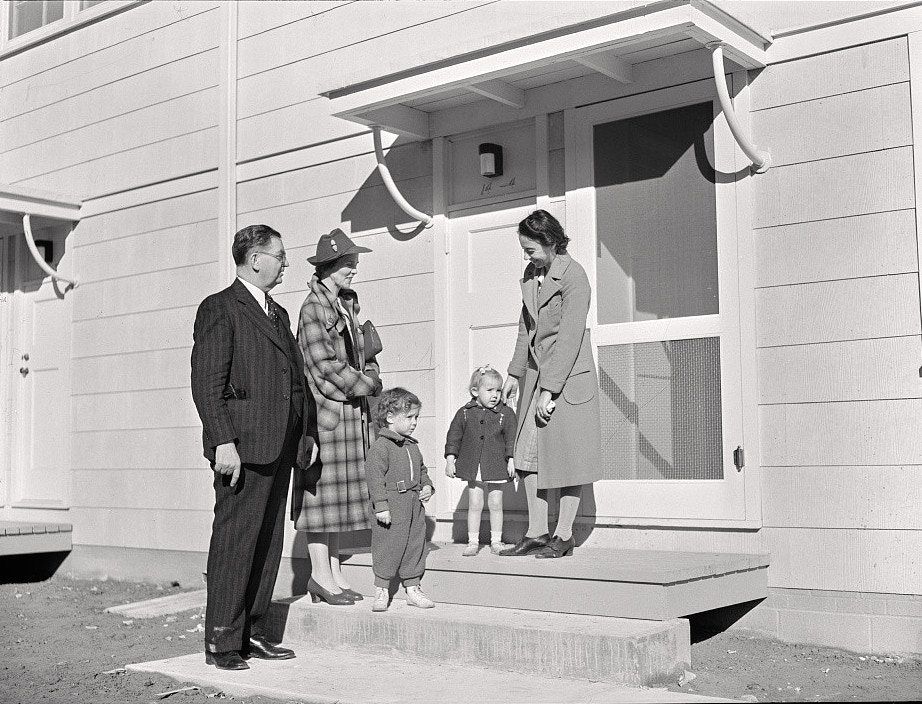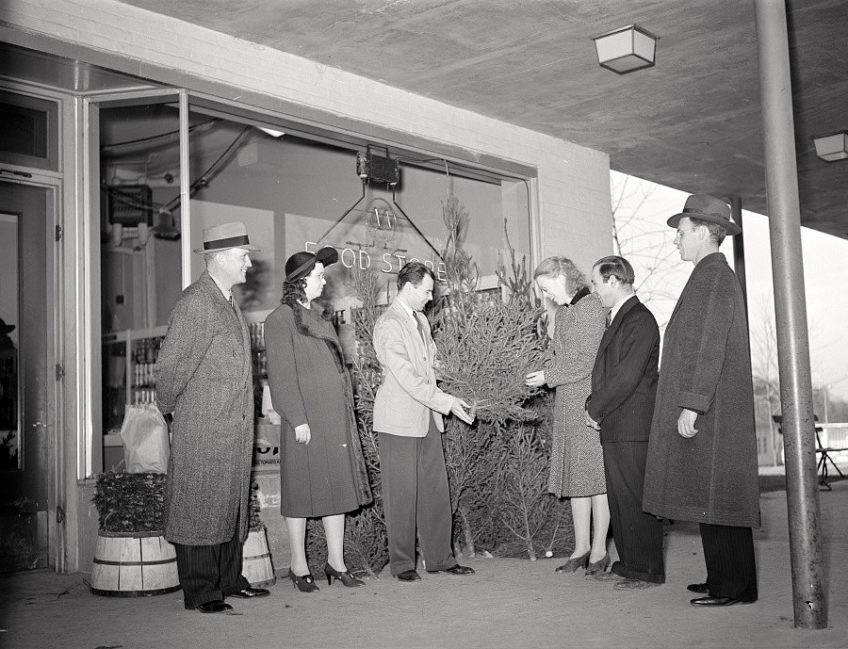Eighty years ago, Greenbelters were preparing for Christmas when the Japanese attacked Pearl Harbor and the United States entered World War II. The holiday festivities went ahead as planned, but preparations were also stepped up to make Greenbelt ready in the event of an attack on the U.S.
Initial Preparations
The town had already started to make preparations before the Pearl Harbor attack. A local Defense Council had formed in the summer of 1941 and made a plan for coordinated action for Greenbelt. The October 24, 1941, Greenbelt Cooperator reported that the various committees were ready to sign up volunteers. George Panagoulis, Greenbelt’s police chief and public safety director, announced that volunteer firemen would be enlisted immediately for training. Mrs. S.H. Downs reported that first-aid classes had already started and a nursing class was being
organized. Dr. James McCarl was organizing an emergency messenger group, which the Girl Scouts had already volunteered for (boys age 10 and up were later recruited). Abe Chasanow, in charge of firearms, reportedly was checking to see if more rifles could be acquired for training volunteers how to shoot. And Thomas Ricker said that his motor unit committee was ready to teach Greenbelt men and women to handle and drive heavy equipment such as trucks, trailers, etc. Volunteers already had participated in an air-raid practice from October 9 to 16, 1941, with army planes conducting maneuvers throughout the Eastern seaboard for observers to spot and report on.
Community Concerns
Fall of 1941 was a time of transition and unease in Greenbelt, even aside from worries about war. The first batch of defense housing (now Greenbelt Homes, Inc. frame houses) was almost ready for occupancy, with families expected to start moving in before the end of December. While residents were looking forward to having new neighbors, they were anxious about how the eventual influx of 1,000 new families would affect the community (Cooperator, December 26, 1941). At the same time, as many as 300 Greenbelt families were threatened with eviction under a new Farm Security Administration order that compelled residents to move out if their present income exceeded the maximum allowed to qualify for entrance by more than 25 percent (Cooperator, November 7, 1941). The order was to go into effect on March 31, 1942, with income to be reported and reviewed semi-annually after that.
War Preparations
After the December 7 attack, emergency measures were stepped up and more residents came forward to volunteer. Greenbelt’s proximity to Washington made an air attack seem like a real possibility and, according to the county air warden, “Greenbelt is one spot that stands out more than any other in the county,” making it an easy target (Cooperator, December 26, 1941). A list of air-raid precautions – keep cool, stay home, put out lights, lie down, stay away from windows – was printed on the front page of the December 12, 1941, Cooperator. Residents were advised to tape windows and leave the screens in place to prevent or contain breaking glass. The community practiced blackout drills and residents were urged by Panagoulis to not even light a cigarette or open a refrigerator door until the “all clear” was given. A survey was made to identify spaces through town that could serve as bomb shelters, with the apartment house basements deemed the best blast-proof shelters available. Panagoulis reported that sufficient space was available for all residents, and that each family would be assigned to one of the spaces.
The Greenbelt American Legion Post organized an airplane observation station atop the drugstore, which went into operation on December 15, 1941, staffed by a volunteer force of 178, each of whom worked two hours per week (Cooperator, January 23, 1942). Housewives did the “spotting” from 8 a.m. to 4 p.m. and high school students spotted from 6 to 8 p.m. and on weekends. Greenbelt men took the night shift, with some paper boys relieving the men in the early morning hours before heading off to school.
Approximately 300 defense volunteers took part in air-raid defense classes that included instructions on air-raid warnings, shelters, the effects of chemical warfare and the handling of bombs – to put an incendiary bomb out of commission smother it with sand or spray it with water to make it burn faster (a direct splash of water may cause the bomb to explode). Eighty-three residents enrolled in first-aid training, with the understanding that minor injuries that might result from an air attack would be treated at first-aid stations set up in the air-raid shelters. And, anyone with a four-door sedan that could be used to transport injured persons to hospitals was asked to notify the authorities.
Holiday Festivities
But Greenbelters also celebrated the holiday season. Children at Greenbelt Elementary sang carols and staged the operetta The Gift of the Magi as their Christmas program. At the high school, the Glee Club sang Christmas tunes at a holiday assembly, followed by a talent show organized by the Student Council and a carol sing. The Washington Mormon Choir presented excerpts from Handel’s Messiah at the Community Center on December 14. Santa made several visits to the local variety store and appeared also at the lighting of Greenbelt’s Christmas tree on December 19, which 350 people attended. And Greenbelt’s official New Year’s Eve dance, held in the school auditorium with music by Ray King’s 12-piece band, surpassed the previous year’s gala affair by bringing in 1942 on a high note, regardless of what the new year might bring.


